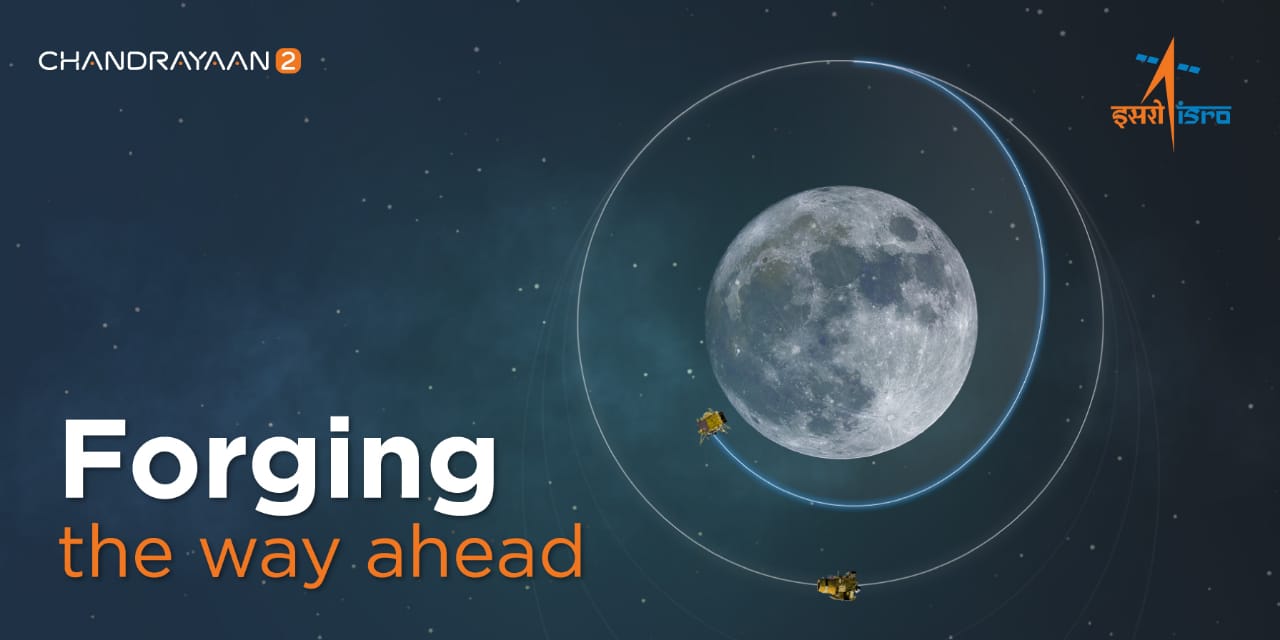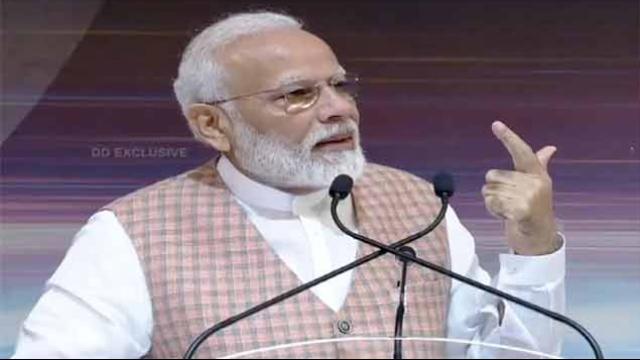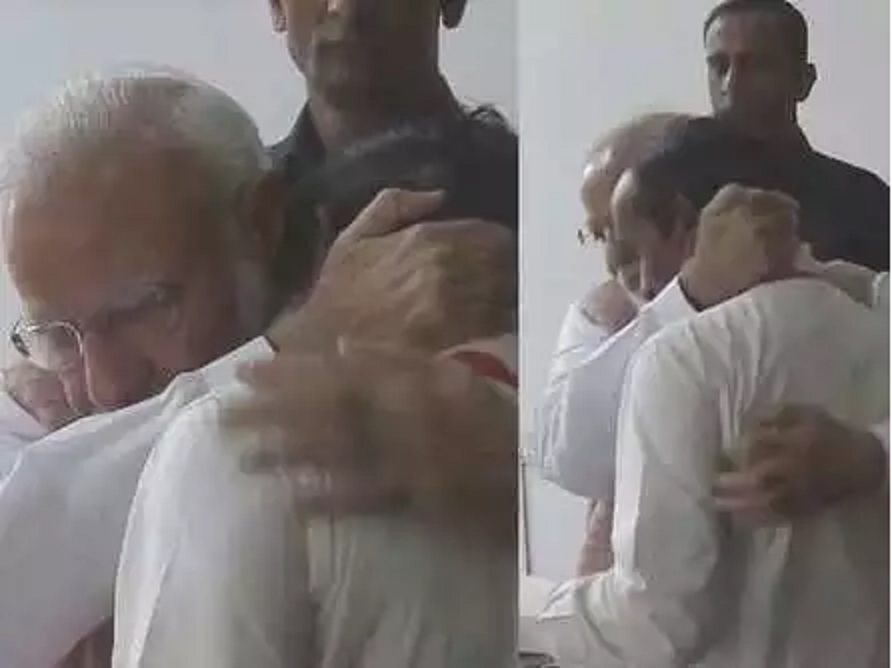
India’s ambitious project Chandrayaan-2 has successfully injected the Orbiter into the Lunar orbit. The orbiter has 8 payloads and will conduct experiments along with providing vital details for further detailed 3D mapping of the moon’s surface. However, as of now the communication with the Vikram lander which had the rover Pragyan has been lost. ISRO has said that descent was as planned and normal performance was observed up to an altitude of 2.1 km. Subsequently, communication from Lander to the ground stations was lost. Data is being analyzed by the scientists.
Prime Minister Narendra Modi, along with students from various schools who won ISRO’s quiz competition, watched the Chandrayaan-2 landing live from the ISRO tracking centre in Bengaluru. The PM was accompanied by ISRO Chairman Dr. K Sivan and other scientists who kept him informed of the developments.
On September 6th, the Orbiter had separated from the Vikram lander successfully and the Orbiter was injected into the lunar orbit. The Vikram lander had started its descent after the separation. Series of maneuvers were carried out using its onboard propulsion system to raise its orbit and place it in the Lunar Transfer Trajectory. On entering Moon’s sphere of influence, on-board thrusters slowed down the spacecraft for Lunar Capture. Subsequently the orbit of Chandrayaan-2 around the moon was circularised to a 100×100 km orbit through a series of orbital maneuvers.
Lander ‘Vikram’ loses contact

The Lander (Vikram) after its separation from the Orbiter, performed a series of complex maneuvers comprising of rough braking and fine braking. Imaging of the landing site region prior to landing was done for finding safe and hazard-free zones. As Vikram attempted to make a soft landing in a high plain between two craters — Manzinus C and Simpelius N — at a latitude of about 70° South on 7th September 2019 at around 2.30 AM IST, communication was lost.
The lander Vikram after its successful landing was to roll out the Rover (Pragyan) which was to carry out experiments on Lunar surface for a period of 1 lunar day which is equal to 14 Earth days. The mission life of Vikram was also 1 lunar day.
The Orbiter will continue its mission for a duration of one year and perform the tasks as intended.
PM Modi praises ISRO scientists and assures all support

PM Modi addresses the nation and scientists from the ISRO headquarters in Bengaluru
After witnessing the Chandrayaan-2 landing in the early morning, PM returned to the ISRO centre at 8AM to interact with the scientists. After interacting with them, the PM addressed the scientists where he said that minor hiccups will not deter their resolve to find success in future attempts and other missions. Resilience is an intrinsic quality of our civilization and we have bounced back every time we have had set backs, said the PM.
In his address the PM also thanked the families of the scientists whose sacrifice is also very important for the success of the missions. It is because of their efforts that ISRO is one of the top space organisations in the world. Their success in Mangalyaan has showcased this amply, he said. Before parting, he met and shook hands with each of the scientists at the facility.
PM warm gesture of hugging Dr K Sivan before leaving has won hearts all over.

PM consoles ISRO Chairman Dr K Sivan before he departs













Comments